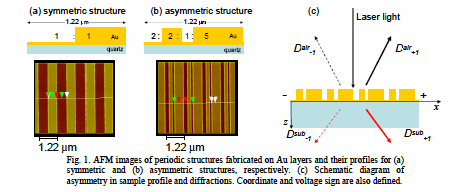Physics of Photonic Metamaterials
A metamaterial is an artificial composite with exotic electromagnetic response that is not readily found in nature. It consists of a unit with a size smaller than the wavelength of incident electromagnetic wave while much larger than the atomic scale. Such a composite can be regarded as an effective new material, of which properties can be designed artificially by its structure. Here in my group, simple structures such as short period metal/dielectric multilayers are investigated in order to understand magnetism in optical regime. Recently we have found that s-polarization reflectivity vanishes at certain angle (s-polarization Brewster's effect) for metal/dielectric metamaterials, which is readily understood in terms of permeability originated from the structure.
Fig.1: s-polarization Brewster's effect: In ordinary materials in optical regime, an angle can be found for vanishing reflectivity for polarization along the incident plane (p-polarization). For the polarization perpendicular to the incident plane (s-polarization), reflectivity never vanishes. However for an appropriately desigend metamaterials, we have found that it readily happens at the incidence angle of 78 degree as is shown in this figure.
Physics in Metallic Photonic Crystal Slabs
Although it is rarely emphasized, radiation pressure due to the translational momentum of light is ascribed to the second order nonlinear optical effect. The pressure can be detected as the voltage if we take appropriate geometry, which is often referred to as a photon drag effect. Optically-thin metallic photonic crystal slabs (MPCS) is an interesting system to investigate such an effect, because the interaction can be designed by the structure. Recently we have demonstrated that asymmetry in the photonic crystal unit cell causes voltage even for normal incidence of light, which may be interpret as photo-rectification. The wavelength and incident angle dependence is readily explained in terms of momentum conservation between the structure and lights including uneven diffraction. Similarly angular momentum of light is also ascribed to the second order nonlinear optical effect. Then it is natural to ask the following question: what is the influence of circular-polarized light to free electrons in MPCS? The investigation along this direction is in progress.
